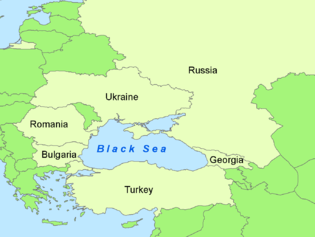Black Sea Convention
The Bucharest Convention (also called the Convention on the Protection of the Black Sea against Pollution) was signed by six Black Sea countries in Bucharest (Romania) on 21 April 1992 and entered into force on 15 January 1994. The implementation is managed by the Commission for the Protection of the Black Sea Against Pollution (Istanbul Commission).
Contracting Parties
- Bulgaria
- Georgia
- Romania
- Russian Federation
- Turkey
- Ukraine
Aims and objectives
The Convention obliges the Contracting Parties to prevent, reduce and control the pollution in the Black Sea in order to protect and preserve the marine environment, marine biodiversity and the marine living resources. The pollution can have several causes such as pollution by hazardous substances, land-based sources, vessels, dumping and exploration and exploitation of natural resources.
Protocols
- Protocol on the Protection of the Black Sea Marine Environment Against Pollution from Land-based Sources and Activities: The purpose of this Protocol is to prevent, control and to eliminate pollution from land-based sources and activities in order to achieve and maintain a good ecological status of the Black Sea.
- Protocol on Cooperation in combating pollution of the Black Sea Marine Environment by Oil and Other Harmful Substances in Emergency Situations: The Protocol aims to maintain and promote (individually or through cooperation) contingency plans for combating pollution of the sea by oil and other harmful substances.
- Protocol on The Protection of The Black Sea Marine Environment Against Pollution by Dumping: Dumping of wastes or other matter is prohibited. Prior general permits may be issued by the competent national authorities.
- The Black Sea Biodiversity and Landscape Conservation Protocol: The purpose of this protocol is to maintain the ecosystem of the Black Sea and its landscape by the protection, conservation and sustainable management of biological and landscape diversity in order to enrich the biological resources. The protocol is also intended as a legal instrument for environmental policies, strategies and measures for preservation, protection and sustainable management of resources and heritage of the Black Sea for present and future generations.
References
- Text of the Convention [1]
- Protocols to the Convention on the Protection of the Black Sea against Pollution [2]
External links
The Commission on the Protection of the Black Sea against Pollution
The European Commission, The Bucharest Convention
Please note that others may also have edited the contents of this article.
|
